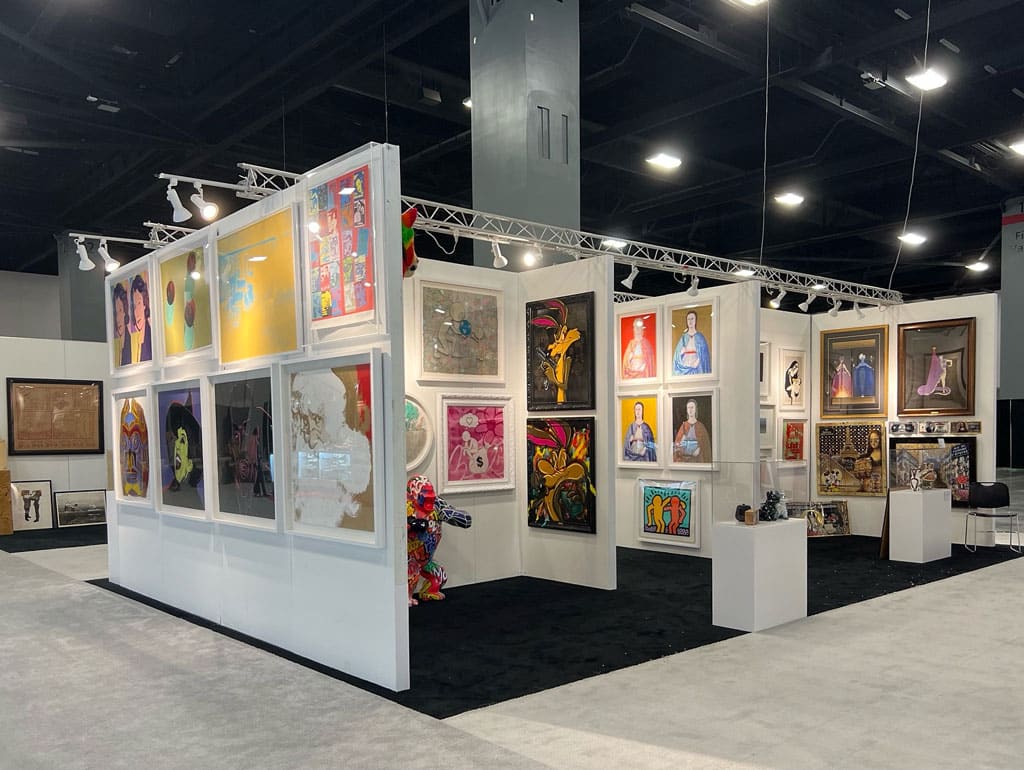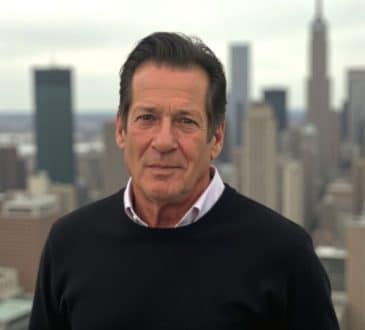Art Through the Eyes of a Visionary: Les Roberts on Miami Fine Art Gallery’s Mission and Legacy

Les Roberts, a native New Yorker turned Miami cultural icon, is the visionary Director of Miami Fine Art Gallery, nestled in the heart of Miami, Florida. Since taking the helm in 2008, Les has transformed the gallery into a globally recognized destination for collectors and art enthusiasts alike. His refined eye for art and unyielding passion for curating collections that bridge classical mastery and contemporary innovation have positioned Miami Fine Art Gallery as a cornerstone of Miami’s vibrant art scene.
With an academic background in Art History and Business from New York University and professional training during an elite internship at Sotheby’s in New York, Les has seamlessly combined his scholarly knowledge with practical expertise. Under his leadership, the gallery showcases works by artistic legends like Rembrandt, Picasso, and Warhol alongside contemporary disruptors like Banksy, Jeff Koons, and Mr. Brainwash. Les’s dedication to connecting collectors with art that inspires and provokes is matched only by his commitment to fostering Miami’s emergence as a global art hub.
In this exclusive Q&A, Les Roberts shares his personal and professional insights, offering a glimpse into the mind of the man who has made Miami Fine Art Gallery a cultural beacon.
What inspired you to dedicate your life to art and its curation?
Art has always been my gateway to understanding the world. As a child, I was captivated by the way a single painting could tell an entire story—whether it was a moment in history or a deeply personal emotion. I grew up in New York City, surrounded by museums and galleries, where I discovered the power of art to bridge cultures, eras, and perspectives.
When I began my studies at New York University, I knew I wanted to combine my love for art with something practical—hence the dual focus on Art History and Business. That decision was pivotal because it taught me that while art is emotional, its preservation, presentation, and commerce require discipline and strategy.
Curating is the ultimate way to merge my passion and expertise. It’s about finding pieces that resonate and creating spaces where their stories can unfold. In many ways, it feels less like a career and more like a calling.
Miami has a unique identity in the art world. How has the city shaped your vision for the gallery?
Miami’s energy is unparalleled. It’s a city of contrasts—old-world charm meets contemporary innovation. That duality resonates deeply with me because it mirrors the ethos of our gallery.
When I arrived in Miami in 2008, the city was on the cusp of a cultural renaissance. Events like Art Basel Miami Beach were turning the spotlight on this vibrant, diverse community. I saw an opportunity to contribute by creating a gallery that celebrated the past while embracing the future.
Miami’s art scene isn’t bound by tradition. It’s fearless, eclectic, and constantly evolving, which has allowed me to take risks as a curator. Whether it’s displaying a centuries-old Rembrandt alongside a daring Banksy or hosting immersive exhibitions, the city encourages innovation—and I’m thrilled to be part of that narrative.
What criteria do you use when selecting works for Miami Fine Art Gallery?
Every piece in our collection is chosen with purpose. For me, it’s not just about aesthetics; it’s about storytelling, emotional connection, and cultural significance.
First, I ask: Does this piece have a story worth telling? Whether it’s a Warhol print reflecting the rise of consumer culture or a Rembrandt portrait capturing the nuances of human emotion, great art always communicates something deeper.
Second, I consider the emotional response. Art should provoke—whether it’s joy, reflection, or even discomfort. I look for works that engage viewers on a visceral level.
Finally, I weigh cultural and historical significance. Some pieces, like those by Picasso or Bacon, are cornerstones of art history. Others, like Banksy’s provocative street art, challenge contemporary norms. The interplay of these works within the gallery creates a dialogue that’s as educational as it is inspiring.
Miami Fine Art Gallery features both classical and contemporary art. How do these two styles coexist in your exhibitions?
I see classical and contemporary art as part of a continuum. They may differ in technique and context, but at their core, they’re about human expression.
For instance, consider Rembrandt and Banksy. Rembrandt’s portraits reflect the societal dynamics of his time through intricate detail and chiaroscuro lighting. Banksy, on the other hand, uses graffiti to critique modern-day issues like consumerism and inequality. Both artists are storytellers, using their mediums to provoke thought and discussion.
When curating exhibitions, I aim to create juxtapositions that spark connections. A viewer might notice how Picasso’s Cubism paved the way for today’s abstract art or see echoes of Warhol’s commentary on mass production in Jeff Koons’ playful sculptures. These dialogues enrich the viewer’s experience and deepen their appreciation of art’s evolution.
What do you enjoy most about working with collectors?
Helping collectors find pieces that resonate with them is incredibly rewarding. Art is deeply personal, and there’s nothing more fulfilling than witnessing someone fall in love with a piece. It’s like watching a spark ignite.
What’s fascinating is how diverse collectors are in their motivations. Some are drawn to art as an investment, while others are purely emotional buyers. I’ve worked with clients who came to the gallery for their first piece and left with a lifelong passion for collecting. Building those relationships is one of the most rewarding aspects of my work.
I also love introducing collectors to works they might not have considered. For instance, a client with a preference for classical art might find themselves captivated by a contemporary piece after learning about its context and significance. Art has a way of surprising us, and I enjoy facilitating those moments of discovery.
How do you approach making art more accessible to first-time buyers?
Education is key. Many first-time buyers feel intimidated because they think they need to be experts to engage with art. My job is to break down those barriers.
When someone new to art visits the gallery, I take the time to understand their interests and preferences. Are they drawn to bold colors or subtle details? Do they connect with abstract forms or figurative works? Once I know what resonates with them, I guide them through the collection, sharing stories and insights about the pieces.
I also emphasize that collecting doesn’t have to mean starting with a Picasso or a Warhol. There are incredible works by emerging artists that are both accessible and meaningful. What matters most is finding something that speaks to you.
What challenges have you faced as a curator and director, and how have you overcome them?
The art world is constantly changing, and staying ahead of trends while maintaining the gallery’s integrity can be challenging. One of the biggest obstacles is balancing the commercial aspect of the business with the creative and cultural mission.
For me, it comes down to staying true to our values. At Miami Fine Art Gallery, we prioritize quality, authenticity, and connection. Whether we’re acquiring a new piece or curating an exhibition, we make decisions based on what aligns with our mission, not just what’s trendy.
Another challenge is ensuring accessibility. High-end galleries can sometimes feel exclusive or intimidating, but I strive to make Miami Fine Art Gallery welcoming to everyone. By fostering an inclusive environment and offering personalized guidance, we’ve built a reputation for approachability.
What’s the future of Miami Fine Art Gallery under your leadership?
I see Miami Fine Art Gallery continuing to evolve as a cultural cornerstone, not just in Miami but globally. My vision is to expand our reach by collaborating with international artists and collectors while deepening our roots in the local community.
I’m also excited about embracing technology. From virtual exhibitions to digital storytelling, there are so many ways to enhance how people experience art. We’ve already started exploring these possibilities, and the response has been incredible.
Above all, I want the gallery to remain a space where people feel inspired, educated, and connected. Whether someone visits us to acquire a masterpiece or simply to experience the magic of art, I want them to leave feeling enriched.
In every piece he curates and every collector he guides, Les Roberts demonstrates an unwavering dedication to art’s transformative power. Through his leadership at Miami Fine Art Gallery, Les has not only elevated Miami’s art scene but also fostered a deeper appreciation for the stories, techniques, and emotions that make art timeless.
Have you read?
Largest Economies in the World by GDP (PPP).
Largest Asset Owners In The World.
Best cities in the world.
Best Countries for Work-Life Balance.
Bring the best of the CEOWORLD magazine's global journalism to audiences in the United States and around the world. - Add CEOWORLD magazine to your Google News feed.
Follow CEOWORLD magazine headlines on: Google News, LinkedIn, Twitter, and Facebook.
Copyright 2025 The CEOWORLD magazine. All rights reserved. This material (and any extract from it) must not be copied, redistributed or placed on any website, without CEOWORLD magazine' prior written consent. For media queries, please contact: info@ceoworld.biz








